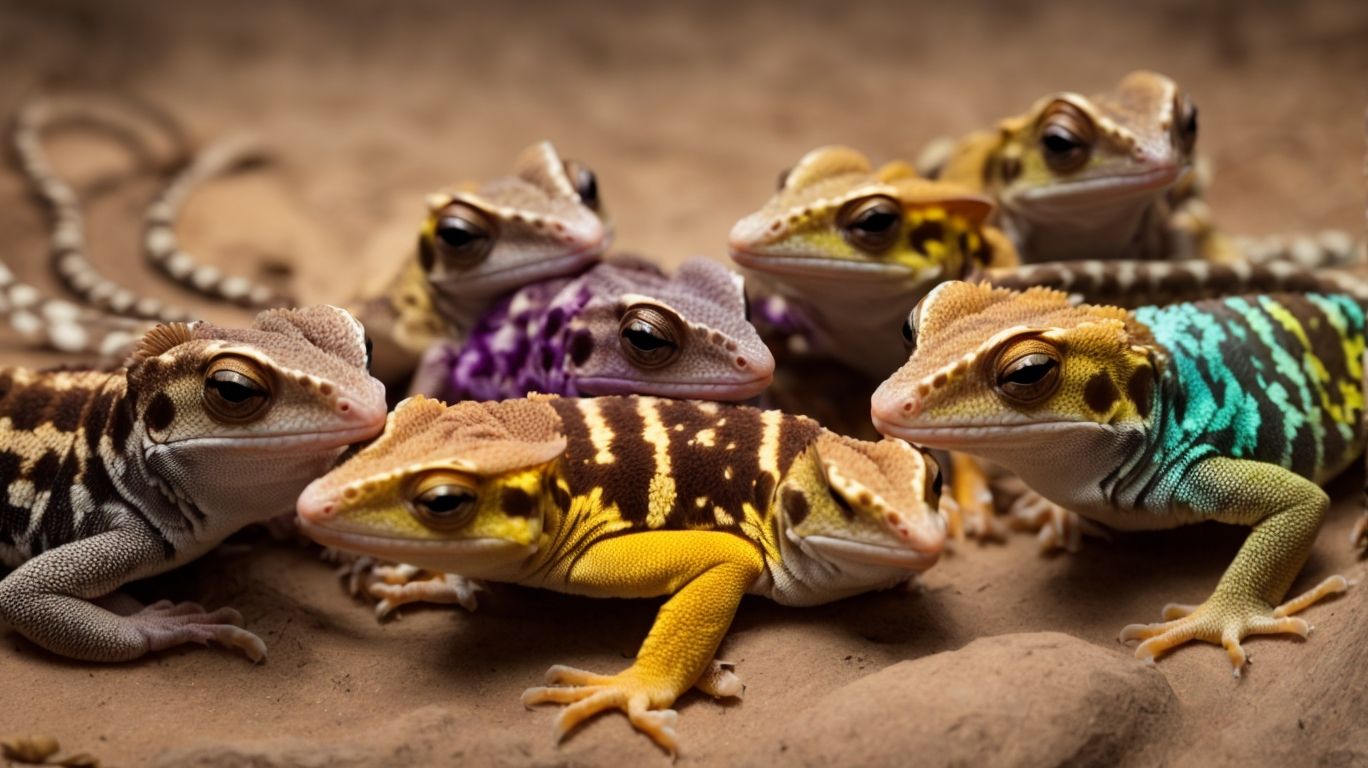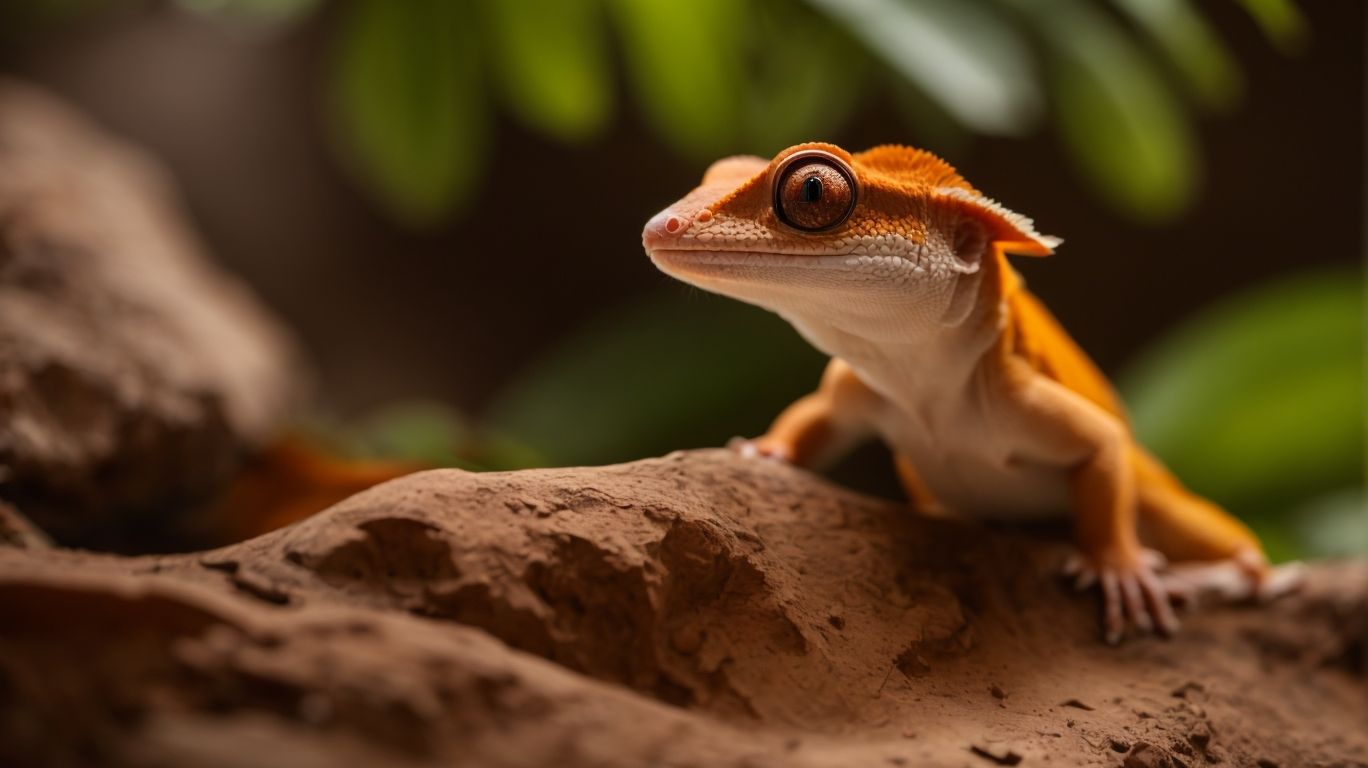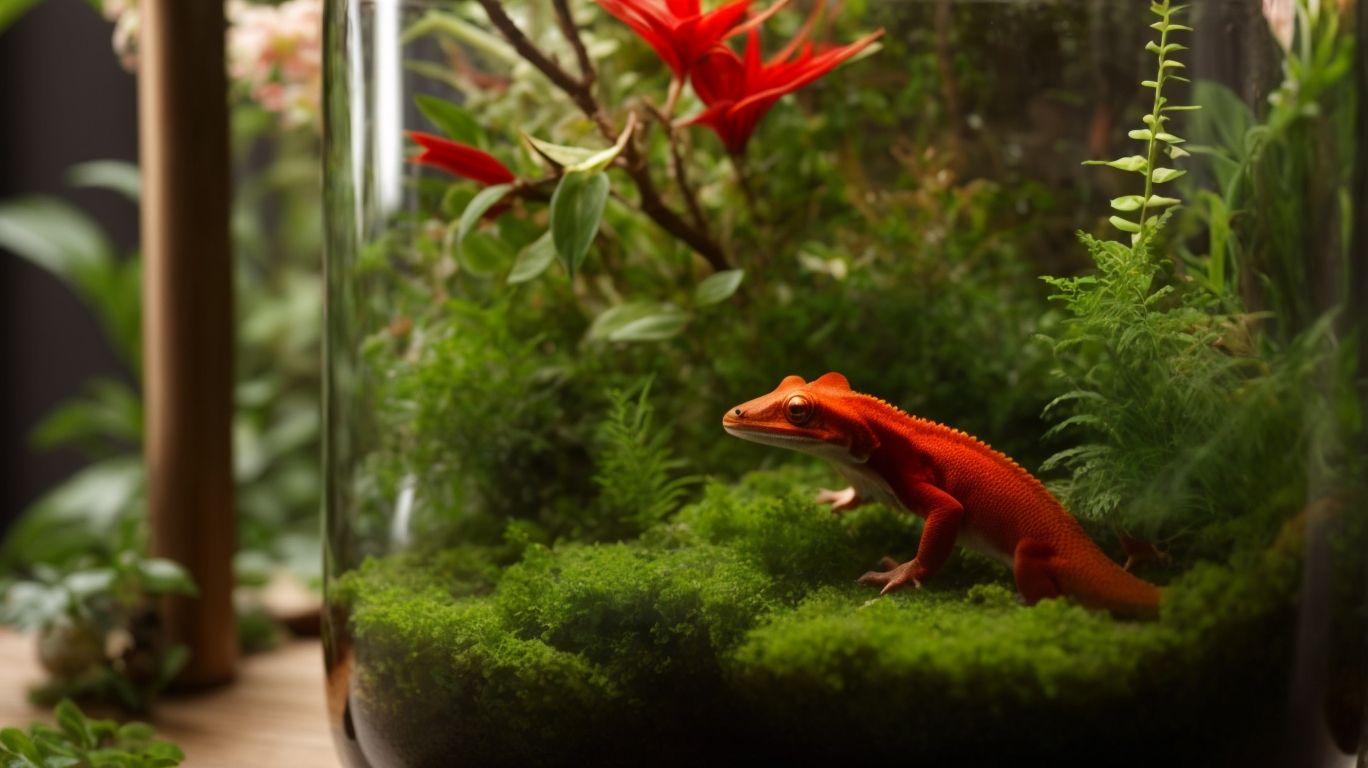
A Palette of Crested Gecko Colours: Identifying Different Varieties
Are you a fan of the unique and fascinating crested gecko? These captivating creatures come in a variety of patterns, colors, and morphs, making them a favorite among reptile enthusiasts.
In this article, we will explore the different varieties of crested geckos, from their physical characteristics to their rarest colors. Whether you’re a seasoned crested gecko owner or just starting out, this article will help you identify the diverse and stunning colors of these remarkable reptiles.
So, let’s dive into the vibrant world of crested gecko varieties!
What Are Crested Geckos?
Crested geckos are a species of reptile that have gained popularity among herpetology enthusiasts due to their unique genetic mutations, diverse phenotypes, and their suitability for captive breeding.
Crested geckos are renowned for their diverse morphologies, displaying a stunning array of colors including vibrant reds, oranges, and yellows, as well as more muted shades of gray and brown. This makes them a visually captivating species.
The practice of captive breeding has also resulted in the creation of new morphs, further enriching the genetic diversity within captive populations. As a result, herpetologists and reptile enthusiasts have become fascinated with studying the taxonomy and morphological variations of crested geckos, shedding light on the intricacies of their genetics and physical appearances.
What Are the Different Varieties of Crested Geckos?
Crested geckos exhibit a wide range of varieties, including pattern, color, and morph variations, influenced by their genetics, pigmentation, and overall appearance, attracting interest from breeders and enthusiasts alike.
Pattern Varieties
The pattern varieties of crested geckos encompass a spectrum of morphological traits and genetic classifications, captivating breeders and enthusiasts with their diverse appearances and phenotypes.
Crested geckos are known for their striking patterns, including dalmatian, harlequin, pinstripe, bi-color, and tiger stripes, which only add to their allure. These patterns are further enhanced by genetic classifications such as tricolor, flame, and extreme harlequin, resulting in a diverse range of appearances. Breeders carefully select for these traits, resulting in visually stunning combinations that are highly sought after in the reptile breeding community.
What truly sets crested geckos apart are their captivating phenotypes, featuring vibrant colors, intricate patterns, and unique markings. These traits make them a favorite among reptile enthusiasts and contribute to their popularity in the breeding world.
Color Varieties
The color varieties of crested geckos showcase a diverse palette of hues and shades, drawing interest from breeders and enthusiasts due to their unique genetic classifications and captivating appearances.
These captivating creatures exhibit a wide range of colors, from vibrant oranges and reds to subtle greens and blues, often with intricate patterns and markings.
Breeders are continually working to enhance and develop new color morphs through selective breeding, exploring the fascinating realm of genetics and phenotype expression.
The striking visual appeal of these geckos has led to a thriving community of enthusiasts dedicated to appreciating and preserving the stunning diversity within the species.
Morph Varieties
The morph varieties of crested geckos encompass a wide array of genetic variations, influencing their appearance and captivating breeders with the potential traits exhibited by their offspring.
Crested geckos exhibit a wide range of color, pattern, and physical structure, which is a result of the interaction of different genes. This leads to unique and visually striking variations among these reptiles.
Breeders put in a lot of effort to understand and utilize these genetic influences to produce specific phenotypes, resulting in one-of-a-kind combinations. The offspring of carefully paired geckos showcase a fascinating blend of their parents’ traits, highlighting the complexity of genetic inheritance and the skill of crested gecko breeding.
How to Identify Different Varieties of Crested Geckos?
Identifying different varieties of crested geckos involves recognizing their distinct characteristics, coloration, traits, and pigmentation patterns, which are influenced by their genetics and phenotypic traits.
Crested geckos are known for their stunning array of colors and patterns, which are a result of their genetic and phenotypic traits. These can range from vibrant reds and oranges to earthy browns and mossy greens.
One of the most fascinating aspects of crested geckos is their unique morphs, such as harlequin, dalmatian, pinstripe, and flame, each with their own distinct patterns and coloration. Additionally, these geckos display incredible variability in eye pigmentation, with some sporting vivid red or orange eyes, adding an extra layer of beauty to their already captivating appearance.
For enthusiasts and breeders in the crested gecko community, understanding the genetics and inheritance of these traits can provide valuable insights and enhance their appreciation for these amazing creatures.
Physical Characteristics
The physical characteristics of crested geckos encompass various traits and appearances that are of interest to breeders and enthusiasts, contributing to their unique phenotypes.
The crested geckos possess distinctive crests that run from their heads to tails, giving them an enchanting appearance. Their wide-set, expressive eyes and velvety skin texture contribute to their captivating allure.
Their coloration can vary widely, including vivid shades of red, orange, yellow, and even more subtle hues. These striking physical features make crested geckos highly sought after by breeders aiming to enhance specific traits and phenotypes in their breeding programs.
Color Patterns
The color patterns of crested geckos are influenced by their pigmentation, genetics, and unique characteristics, making them a focal point of interest for breeders and enthusiasts.
The pigmentation of crested geckos results in a stunning range of colors, such as red, orange, yellow, brown, and various shades of green. Each gecko’s unique genetic makeup determines its specific color combinations and patterns, making them truly one-of-a-kind. These mesmerizing color variations have caught the interest of breeders and enthusiasts who enjoy the complexities of crested gecko genetics and the challenge of breeding for specific color traits.
Morph Traits
The morph traits of crested geckos encompass genetic influences that shape their appearance and phenotypic traits, contributing to their overall uniqueness and appeal to breeders and enthusiasts.
Genetic influences play a significant role in the diverse range of appearances found in crested geckos. These can include vivid and contrasting color patterns, as well as variations in body structure like cranial crests and dorsal spines.
The interaction between different alleles and genetic mutations further amplifies the variability in traits, resulting in an array of phenotypes that continue to captivate reptile enthusiasts. By understanding the genetic basis of these traits, breeders can enhance their breeding outcomes and gain a deeper appreciation for the intricate interplay of genetics and visual characteristics in crested geckos.
What Are the Most Common Crested Gecko Colors?
The most common colors observed in crested geckos are red, orange, yellow, brown, black, and white, showcasing a varied palette that adds to the allure of these reptiles.
Red
Red is a common color observed in crested geckos, contributing to their varied palette and adding distinct pigmentation and appearance traits to these reptiles.
This rich coloration can range from a vibrant crimson hue to a deep, luxurious shade of burgundy, creating a striking visual impact.
The presence of red pigmentation often enhances the overall appearance of crested geckos, accentuating their intricate patterns and adding depth to their mesmerizing palette.
It is fascinating to observe how the interplay of red with other hues results in a myriad of unique and captivating visual traits in these remarkable creatures.
Orange
The orange color is a common trait found in crested geckos, contributing to their diverse palette and showcasing unique appearance traits influenced by pigmentation and genetic variation.
This vibrant hue can range from soft apricot tones to intense fiery shades, adding depth and dimension to their overall appearance. The pigmentation behind the orange color is influenced by genetic variation, resulting in a spectrum of shades and patterns across different geckos.
This coloration often stands out against their green or brown base, creating a striking visual contrast that captivates reptile enthusiasts and adds to the allure of these fascinating creatures.
Yellow
Yellow is a common color observed in crested geckos, adding to their diverse palette and showcasing unique appearance traits influenced by genetic mutations and distinct pigmentation.
This vibrant hue often appears in various shades across different gecko populations, contributing to the mesmerizing array of colors and patterns seen in these captivating creatures.
Genetic mutations, such as the harlequin and dalmatian morphs, can intensify or alter the distribution of yellow, creating stunning variations in the gecko’s appearance. The interaction of distinct pigmentation with yellow adds another layer of complexity, resulting in mesmerizing displays of iridescence and contrast in their scales and skin.
Brown
Brown is a common color trait found in crested geckos, contributing to their diverse palette and highlighting unique appearance traits influenced by genetic variation and distinct pigmentation.
This distinct brown coloration can manifest in various shades, from a rich chocolate hue to a lighter tan, adding depth and character to the gecko’s appearance.
Genetic variation plays a significant role in determining the specific tonal range and patterning within this brown pigment, resulting in a remarkable array of visual expressions across different gecko individuals. This genetic diversity contributes to the overall vibrant and captivating presence of crested geckos within the reptile community.
Black
Black is a common color observed in crested geckos, adding to their diverse palette and showcasing unique appearance traits influenced by genetic mutations and distinct pigmentation.
This rich and deep hue often manifests as bold markings, contrasting with vibrant colors or blending seamlessly into their skin, creating captivating patterns.
Genetic mutations play a vital role in these diverse pigmentations, leading to variations in intensity and distribution of the black color across the gecko’s body.
The presence of black pigmentation contributes to the striking visual appeal of crested geckos, making them highly sought-after in the reptile enthusiast community.
White
White is a common color trait found in crested geckos, contributing to their diverse palette and showcasing unique appearance traits influenced by genetic variation and distinct pigmentation.
This white coloration can manifest in various patterns, such as pinstripes, flames, or solid white markings, enhancing the overall aesthetic appeal of these geckos.
The interplay of genetic variations dictates the intensity and distribution of white pigmentation, resulting in a striking range of visual outcomes. The presence of white in their appearance often accentuates other colors present, creating a captivating contrast and adding to the allure of these fascinating creatures.
What Are the Rarest Crested Gecko Colors?
Some of the rarest colors observed in crested geckos include purple, blue, pink, lavender, silver, and rainbow, adding an element of exclusivity to these reptiles and capturing the fascination of enthusiasts.
Purple
Purple is a rare color observed in crested geckos, adding an element of exclusivity and fascination to their genetic mutations, appearance, and distinct pigmentation.
This unique hue is the result of a genetic mutation that affects the gecko’s pigmentation, resulting in a striking and captivating appearance.
The scarcity of the purple color in crested geckos makes it highly sought after among reptile enthusiasts and breeders. The deep, rich shades of purple in their skin often invoke a sense of wonder and awe, as it is not commonly found in their species.
Understanding the genetic basis of this exceptional coloring can also provide insights into the diverse and intriguing world of reptile genetics and pigmentation patterns.
Blue
Blue is a rare color trait found in crested geckos, adding an element of exclusivity and fascination to their appearance, genetic variation, and distinct pigmentation.
This unique coloration is a result of specific genetic variations, and its presence is a source of intrigue for reptile enthusiasts.
The stunning blue hue, when present in a crested gecko, often exhibits a mesmerizing iridescence, setting them apart from other gecko morphs.
Due to the complexity of the genetic factors involved, blue crested geckos are highly sought after and prized for their striking visual appeal.
The ethereal beauty and mystical allure of their blue pigmentation make them truly exceptional specimens in the world of herpetoculture.
Pink
Pink is a rare color observed in crested geckos, adding an element of exclusivity and fascination to their appearance, genetic mutations, and distinct pigmentation.
This uniqueness is due to the influence of genetic mutations that result in the expression of the pink hue, making these geckos even more intriguing to reptile enthusiasts.
The rarity of pink in crested geckos has captured the attention of breeders and collectors, contributing to the allure of these captivating creatures. It is fascinating to observe how certain pigmentation variations offer a glimpse into the intricate genetic makeup of these incredible animals.
Lavender
Lavender is a rare color trait found in crested geckos, adding an element of exclusivity and fascination to their appearance, genetic variation, and distinct pigmentation.
This unique color variation is not commonly found in crested geckos, making lavender specimens highly sought after among reptile enthusiasts.
The influence of genetic variation contributes to the exquisiteness of this hue, as it is the result of specific combinations of genes that manifest in this delicate and intriguing shade.
The distinct pigmentation of lavender crested geckos sets them apart, with their subtle pastel hues captivating the eye and igniting curiosity about the intricate genetic processes that lead to such breathtaking coloration.
Silver
Silver is a rare color observed in crested geckos, adding an element of exclusivity and fascination to their appearance, genetic mutations, and distinct pigmentation.
This unique hue is the product of genetic mutations that lead to a stunning deviation from the more common colors found in crested geckos.
Silver crested geckos evoke curiosity and captivation among reptile enthusiasts, as their striking silver hue sets them apart from their counterparts.
The influence of genetic variations and distinct pigmentation in these geckos underscores the intricate interplay of genetics and natural beauty in the animal kingdom.
Rainbow
Rainbow is a rare color trait found in crested geckos, adding an element of exclusivity and fascination to their appearance, genetic variation, and distinct pigmentation.
This unique hue is not commonly seen in crested geckos, making those possessing it particularly intriguing to reptile enthusiasts.
The presence of rainbow coloring is influenced by a fascinating combination of genetic variation and distinct pigmentation, resulting in a mesmerizing display of iridescence and vibrant shades.
The rarity of this trait adds to the allure of crested geckos, highlighting the intricate interplay of genetics and pigmentation that contributes to their captivating visual appeal.




No Comments